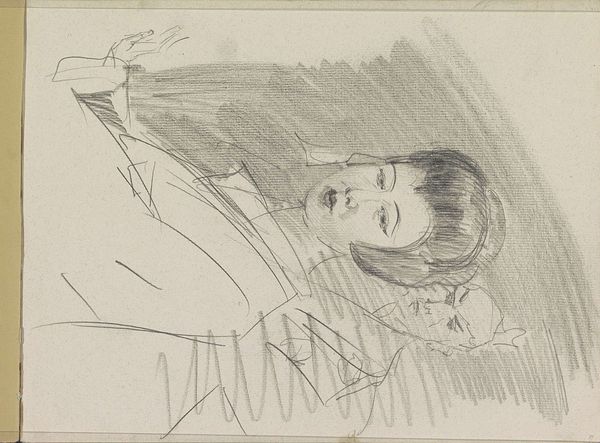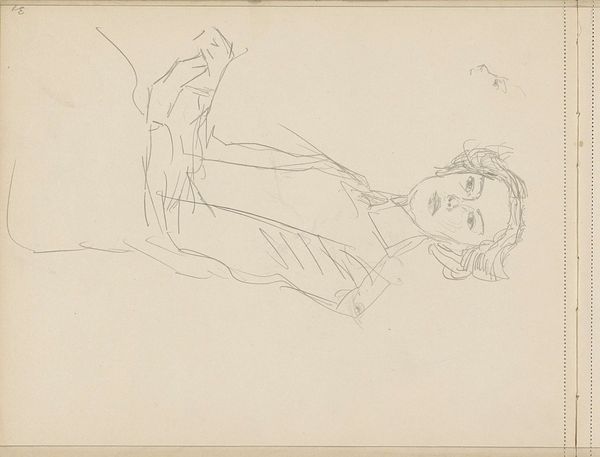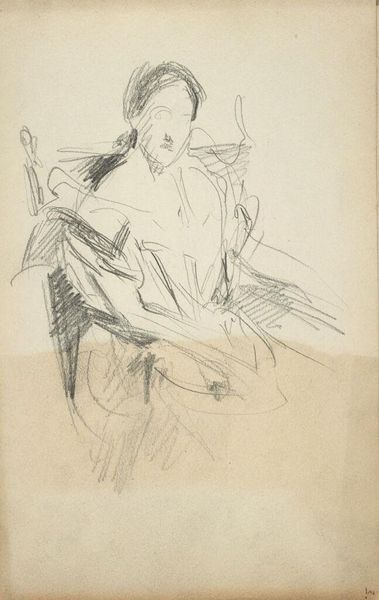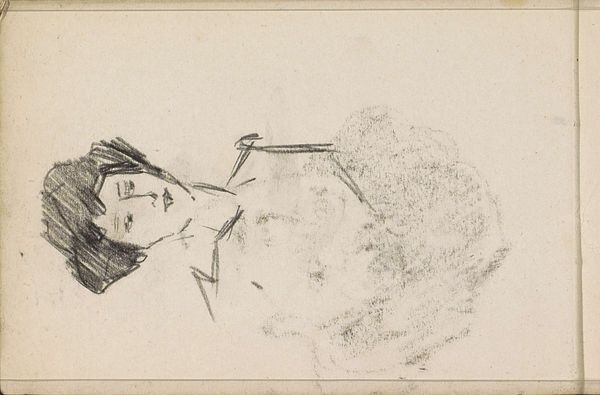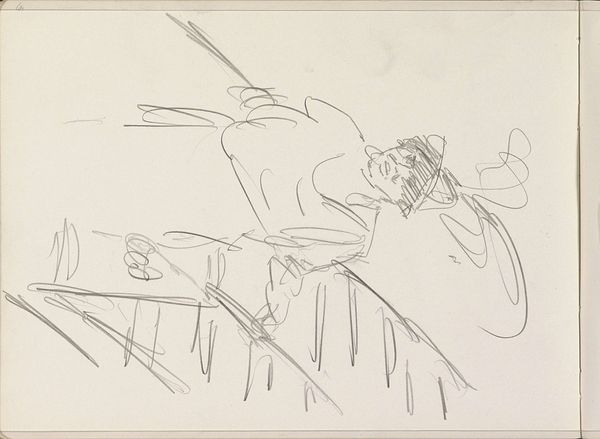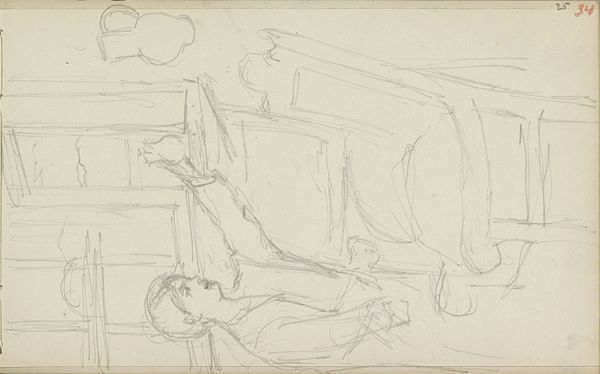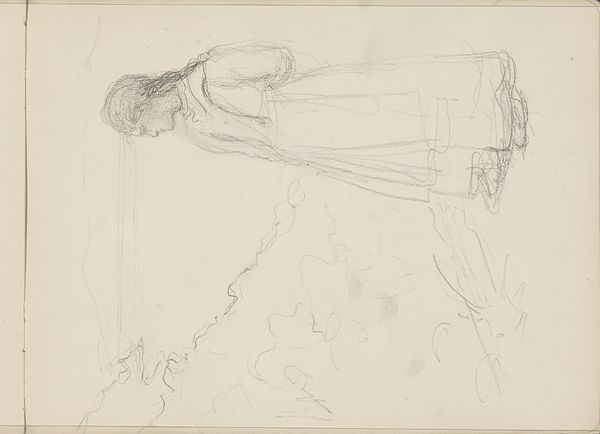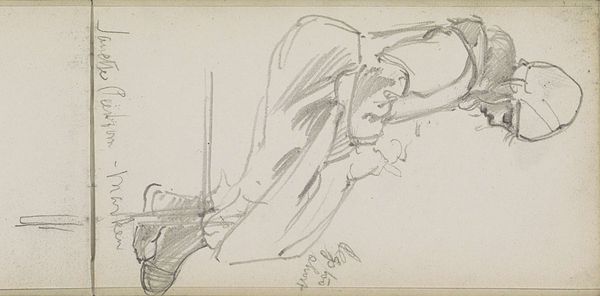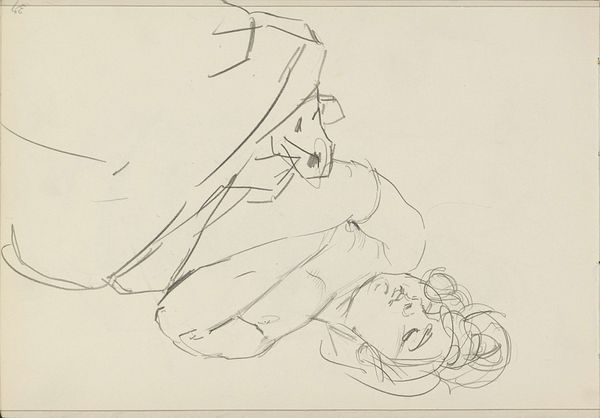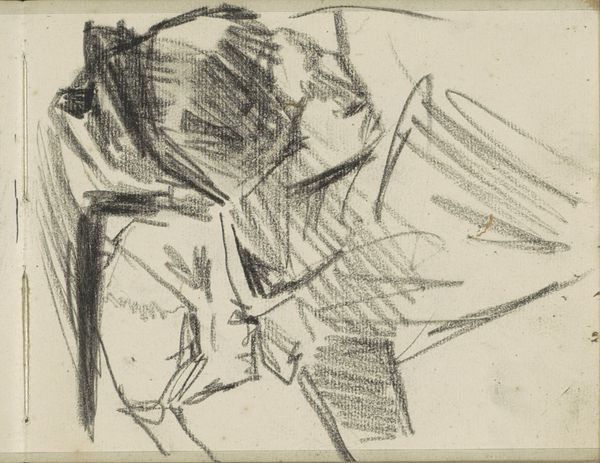
#
amateur sketch
#
imaginative character sketch
#
light pencil work
#
pen sketch
#
personal sketchbook
#
idea generation sketch
#
ink drawing experimentation
#
pen-ink sketch
#
sketchbook drawing
#
initial sketch
Copyright: Rijks Museum: Open Domain
Curator: This intriguing sketch is titled "Biljartster," or "Billiard Player," by Isaac Israels, created sometime between 1890 and 1920. It currently resides in the Rijksmuseum collection. What are your initial thoughts on this work? Editor: Well, it's clearly just a sketch, but there's an immediacy that’s appealing. The pencil lines are so light and free, almost weightless. The player’s form seems to emerge from the page with an amazing efficiency of line. Curator: Indeed. Look at the almost casual way Israels captures the figure's pose, reaching for the cue. It really speaks to the era's changing societal views on women engaging in more public activities, challenging gender roles. Editor: It’s also important to remember the billiards themselves - the felt, the cues, the ivory. Were these materials ethically sourced and by whom? These considerations give the work another depth when viewed as part of the social fabric and economic considerations. The billiard saloon as a locus for class encounter. Curator: That’s fascinating. I am also thinking about the concept of 'leisure' at this historical moment and the identity of those excluded and included, and their class, race and ability and, specifically, in the early sketches, in generating this imaginative character. Editor: It makes you wonder about Israels' process, doesn’t it? Was this a quick study done on-site, or worked from memory later? What kind of pencil and paper are we dealing with? The material choices themselves influence the sketch’s impact and can suggest about access, privilege, and production. Curator: Thinking about this image today prompts questions about inclusivity, access, and representation. It serves as a point for reflection on the narratives—which are chosen and, indeed, whose labor created them. Editor: Exactly, by considering how the piece was made we encourage reflection on who profited in the billiard hall to make materials or sell drinks; to make leisure affordable only to some and on the work of others. Curator: It is a fascinating interplay of social documentation and artistic license, really. Thanks for providing the other viewpoint. Editor: It makes us see both production and possibilities—thank you.
Comments
No comments
Be the first to comment and join the conversation on the ultimate creative platform.

